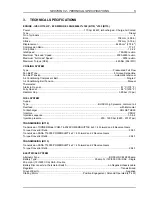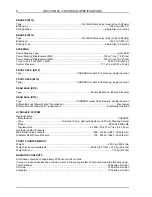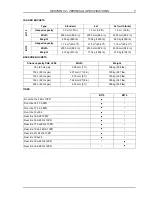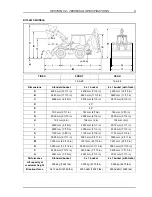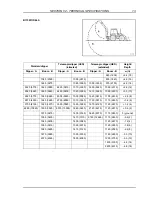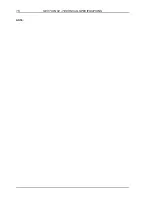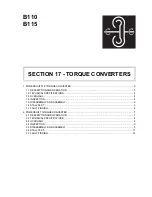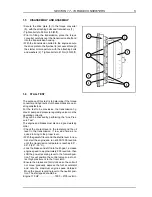
SECTION 17 - TORQUE CONVERTERS
3
1.
POWERSHUTTLE TORQUE CONVERTER
1.1
DESCRIPTION AND OPERATION
The torque converter is the connection between the
engine and the transmission and is hydraulically ac-
tuated. The main parts of the torque converter (A)
are the impeller (pump), the turbine, the stator and
the front and rear covers. The impeller is integral
with the rear cover and is driven by the engine fly-
wheel by means of a drive plate.
The stator, is splined to a stationary shaft (stator
support) through a one-way clutch that permits the
stator to rotate only in the same direction as the im-
peller. All of the converter parts are enclosed in an
oil-filled housing. The front and rear cover, being
welded together, form the housing.
The turbine (2), splined to the front input shaft, is
splined to a stationary shaft (stator support) through
a one-way clutch that permits the stator (3) to rotate
only in the same direction as the impeller (1). All of
the converter parts are enclosed in an oil-filled hous-
ing. The front and rear cover, welded together, form
the housing. When the engine is running, the oil in
the converter flows from the impeller (1) to the tur-
bine (2) and back to the impeller through the stator
(3). This flow produces a maximum torque increase.
When enough oil flow is developed by the impeller,
the turbine begins to rotate, driving the front input
shaft. The torque multiplication gradually decreases
as turbine speed approaches impeller speed, and
becomes 1 to 1 when the turbine is being driven at
nine tenths impeller speed.
When the turbine (2) is rotating at approximately
nine tenths impeller speed, the converter stops mul-
tiplying torque because the oil is now acting on the
rear face of the stator blades (4). The action of the
oil on the rear face of the stator unlocks the one-way
clutch (5), permitting the stator to rotate in the same
direction as the turbine (2) and impeller (1). Through
this action the converter becomes an efficient fluid
coupling by transmitting engine torque from the im-
peller to the turbine. To achieve optimum operation
the engine performance, transmission ratios, hy-
draulic power delivery and converter torque multipli-
cation are all “Matched” to provide the necessary
vehicle drive torque when required. When the tur-
bine is rotating less than nine tenths impeller speed
(1), the converter is multiplying torque through the
action of the stator (3). This action, produced by oil
acting on the front face of the stator blades, tends to
rotate the stator in the opposite direction of the im-
peller (1) and turbine (2). However, the one-way
clutch prevents this opposite rotation and allows the
stator to direct oil back to the impeller, thereby pro-
ducing torque multiplication. Maximum torque multi-
plication is achieved when the impeller is driven at
stall speed and the turbine is stationary.
Summary of Contents for B110
Page 7: ...4 Find manuals at https best manuals com ...
Page 15: ...8 ...
Page 16: ...B110 B115 SECTION 00 SAFETY PRECAUTIONS ...
Page 17: ...2 SECTION 00 SAFETY PRECAUTIONS ...
Page 22: ...B110 B115 SECTION 01 MAINTENANCE ...
Page 23: ...2 SECTION 01 MAINTENANCE ...
Page 29: ...8 SECTION 01 MAINTENANCE NOTE ...
Page 31: ...2 SECTION 02 TECHNICAL SPECIFICATIONS 1 ...
Page 45: ...16 SECTION 02 TECHNICAL SPECIFICATIONS NOTE ...
Page 47: ...2 SECTION 17 TORQUE CONVERTERS ...
Page 51: ...This as a preview PDF file from best manuals com Download full PDF manual at best manuals com ...

